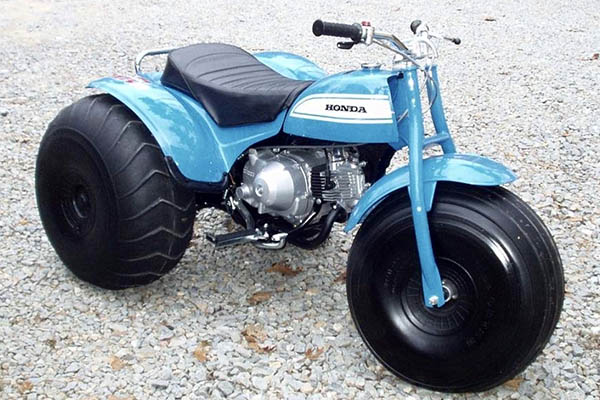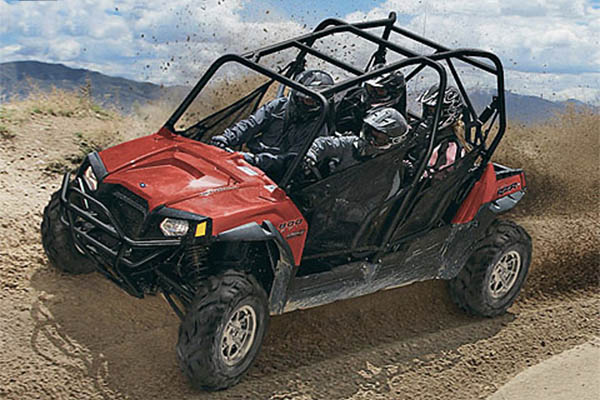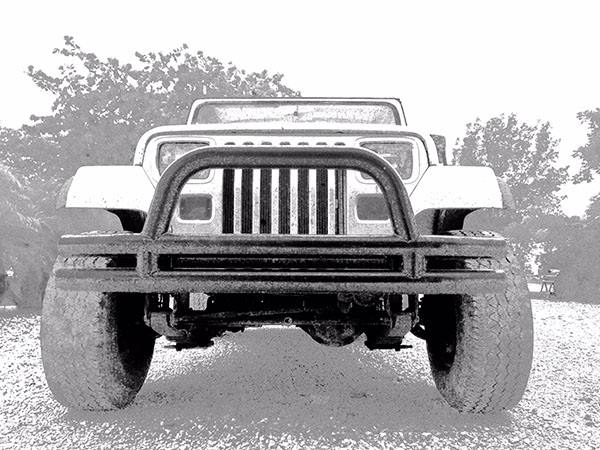
I don’t know if it’s true (and in today’s environment I don’t even care if it’s true) but I read somewhere that ATVs are outselling motorcycles. This makes sense as ATVs or Quads or whatever you want to call the things are low-skill devices that anyone can ride off road.
Back in the early 1970’s the big boom in motorcycling was started in the dirt. Kids like you and me bought mini bikes and enduros by the zillions. An entire industry sprang to life and that industry supported all levels of riding. Collectively, we learned the difficult art of steering a wiggling motorcycle across sand and mud and rocks. It wasn’t easy. It took a lot of talent to keep from crashing and we lost a lot of good people to concentration lapses or simple bad luck.
The first ATVs were 3-wheeled contraptions that took even more skill than motorcycles to ride in the dirt. It didn’t take long for manufacturers to figure out 4 wheels were a lot more stable than 3 and that was the beginning of the end for motorcycles in America.

Since children cannot operate motorcycles on the street, dirt bikes were like a Pop Warner league feeding well-trained riders into the Bigs: The Pavement. Harried on all sides by nearly unconscious automobile drivers our generation’s ability to ride a motorcycle in that buoyant area beyond the limits of traction became a right handy survival skill. And so a huge bubble of capable motorcycle riders surged through the land buying motorcycles at a clip never before seen.
Meanwhile, the Quads kept getting bigger and safer while dirt bikes were safety-limited by their very design: They fell over. Anyone can steer a quad. It takes no skill whatsoever to trundle along following the huge ruts made by thousands of other quads. Trails were ruined by the excessive width and sheer quantity of idiots driving their miniature cars. Dirt bikes were hard to ride and safety concerns overtook the nation’s parents. As ATV’s filled the forests the available pool of motorcycle riders dwindled. The farm system began to dry up.
Now, Quads cost $25,000 and are the size of Jeeps. Four people fit comfortably strapped into a steel cage, safe from the environment they go about destroying. ATVs can go almost anywhere their bubblegum tires will support the vehicle’s weight and the weight of their passengers. Automatic transmissions erased the last vestige of talent needed to explore off road. On the trails I ride kids on motorcycles are the exception not the rule. Sometimes I can go all day and see nothing but quads. How many kids raised in a cocoon of steel bars would be crazy enough to start riding a motorcycle on the street? We know the answer: Very few.
It’s not the cost of new motorcycles; there are plenty of cheap bikes available. It’s not Gen X, Y, or Z being too chicken or into their cell phones. It’s not branding. It’s not lack of riding areas. None of these things killed motorcycles.
A safer, easier to operate dirt machine was built and human nature did the rest. ATV’s are capturing the kids at their most impressionable age. Motorcycles are not. Nothing we can do will reverse that trend.
Want more Gresh? It’s right here!
Never miss an ExNotes blog!

